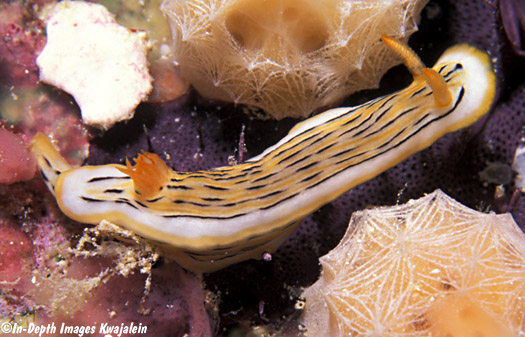
Relatively rare in the Marshall Islands, this species is most often found on lagoon pinnacles but can live along interisland reefs as well. We have found maybe 15 specimens, three at Utirik Atoll and the rest at Kwajalein. Several at Kwajalein were under one of my "nudibranch collectors." These are sheets of corrugated aluminum that have blown into the water during storms and been encrusted on the undersides with a good growth of sponges and other sessile organisms. These aluminum sheets seem to be favored by a number of sponge feeding chromodorids. Several months after a storm at Enewetak blew many of these sheets onto the shallow lagoon reefs, populations of many nudibranch species bloomed. Specimens of C. colemani in the Marshalls have ranged up to about 25mm in length. Gosliner et al (2018) figure this species (one of these photos) as Chromodoris sp. 9. Animals with varying colors and patterns have been attributed to this species from other parts of the western Pacific, often appearing to mimic other Chromodoris species in particular areas. Molecular data determined by Layton et al (2018) do indicate those various forms are all indeed one species. The Marshall Islands variation was not compared and its pattern of numerous fine, often interrupted black streaks seems rather different from the color forms whose molecular data has been tested. Chromodoris colemani was originally described by Rudman (1982) from only three specimens, one just a photograph, from Queensland, Australia. The Marshall lslands specimens much more closely match in color pattern the figure of the holotype (copied here) from that Rudman description than do any of the others generally figured as this species, except that the holotype has a distinct white margin and orange submargin; the Marshall Islands specimens often lack the white outer edge. So I still have questions. Are these really C. colemani? And are the various color forms in the Layton paper and elsewhere in publications and on the internet really the original C. colemani?

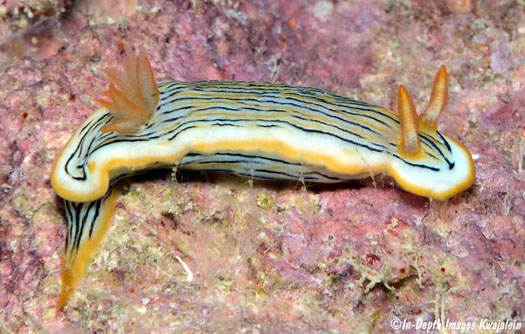
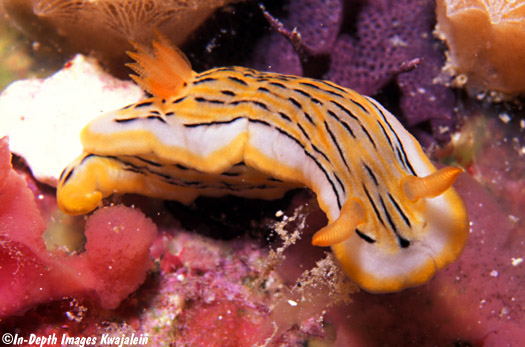
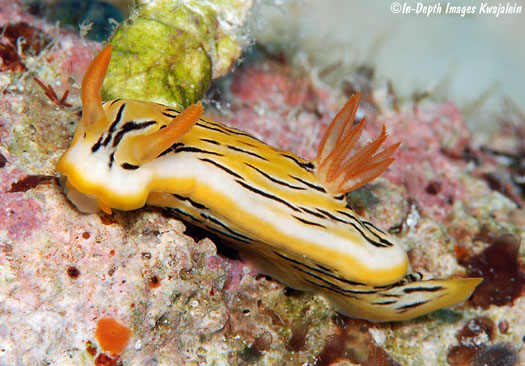
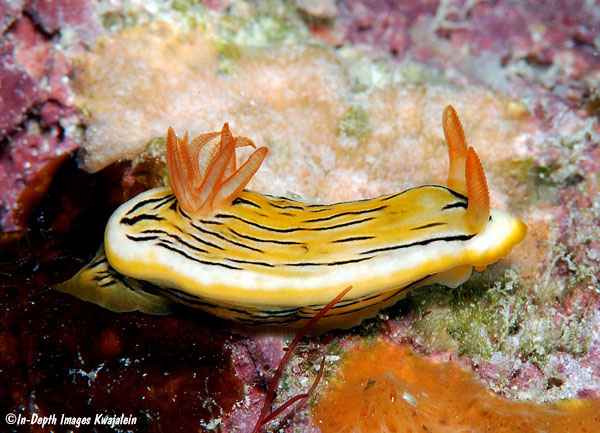
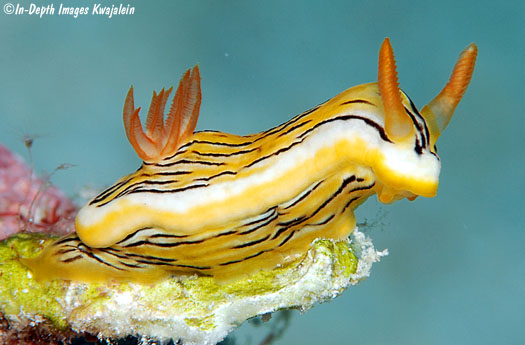
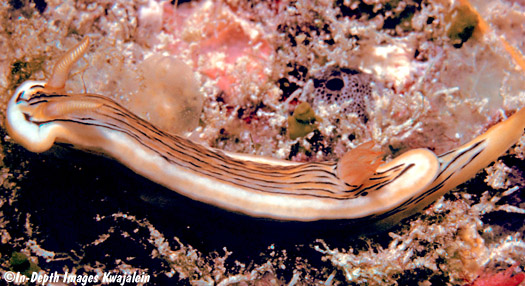
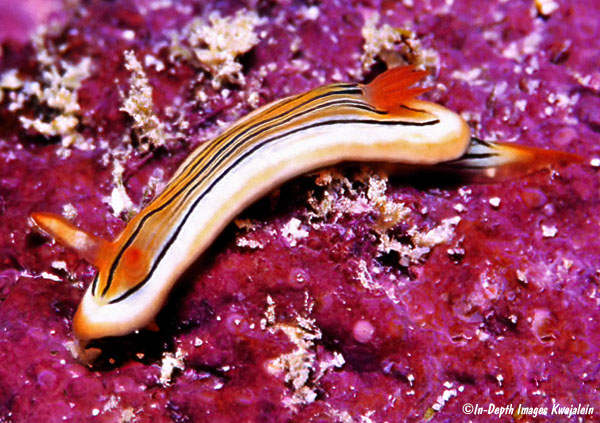
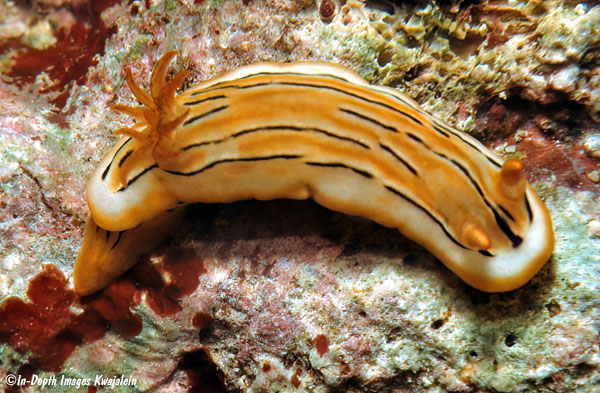
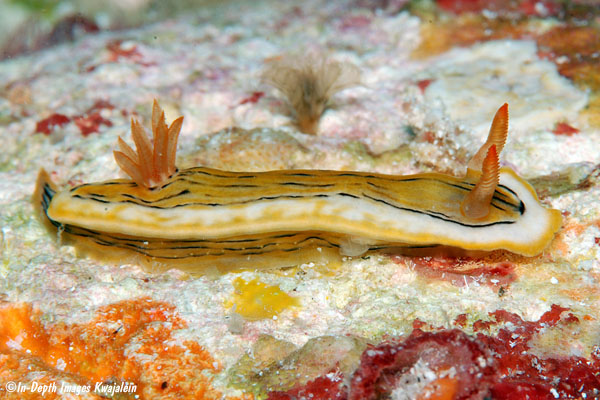
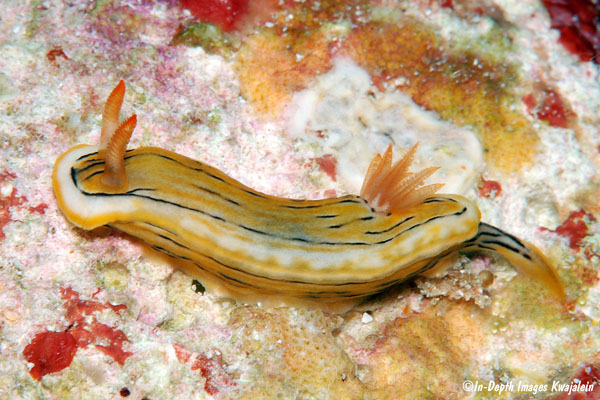
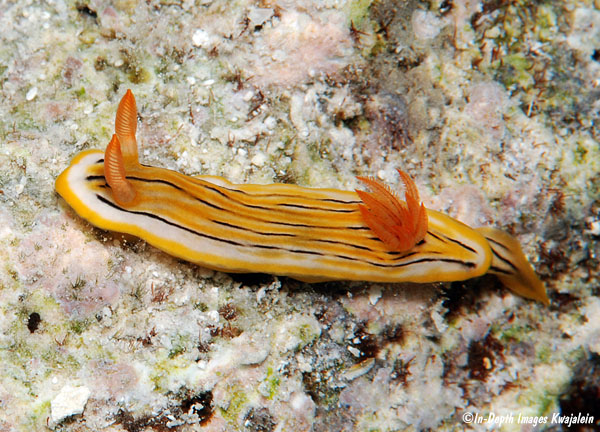
The specimen below is one of three found at Utirik Atoll in the northern Marshall Islands.
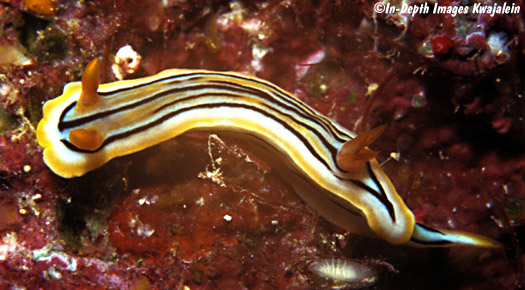
The Kwajalein specimen below appeared to be feeding on the lilac-colored sponge.
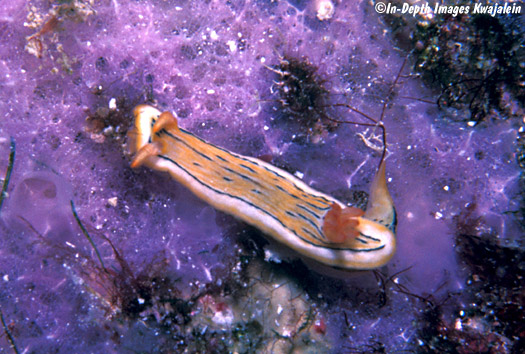
The individual below was found with its egg mass, deposited with the wide edge flat on a red sponge, on 22 July 2013.
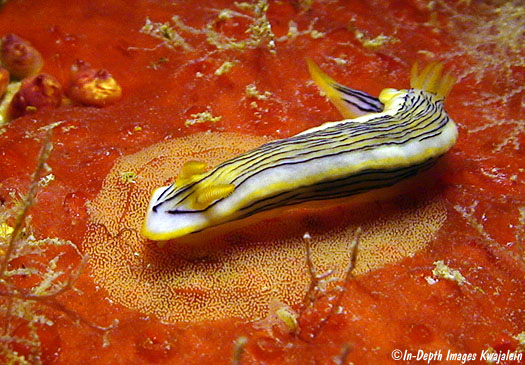
Created 14 December 2005
Updated 23 July 2024